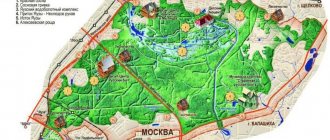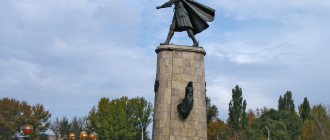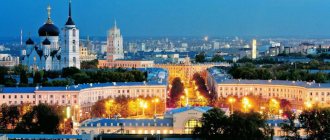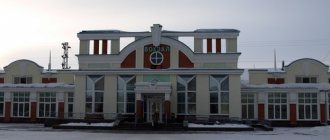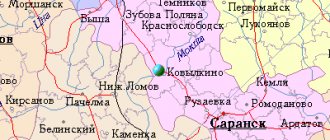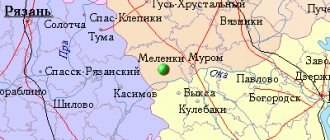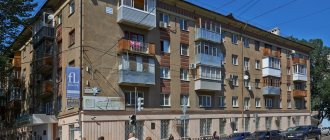On May 7, 2007, the concept of “City of Military Glory” was officially announced in Russia. On February 16, 2008, Voronezh was also awarded this title. The history of the city for children and adults who live there today is a story about their heroic fathers and grandfathers, who for four centuries took an active part in the events that took place in our country. In addition, from it you can glean interesting information about the people who did a lot to give the city its modern, young and attractive appearance.
Voronezh: history of the city name
Regarding the etymology of the toponym “Voronezh”, today there is not a single more or less clearly reasoned hypothesis, although systematic research in this area has been carried out for more than a century and a half. In particular, in the 19th century, the Russian linguist-Slavist I. Sreznevsky believed that it came from the name of the bird “Raven”. Somewhat later, this point of view was supported by the German linguist M. Vasmer.
In 1947, Leningrad researcher A. Popov suggested that the geographical name “Voronezh” is associated with the Mordovian word “vir”, which translates as forest. This hypothesis caused controversy, and it had both supporters and opponents.
In 1971, V. Zagorovsky, in a monograph dedicated to ancient Voronezh and its history, suggested that the toponym is associated with the as yet unidentified name “Voroneg”.
An interesting hypothesis was put forward by local historian Y. Mulkidzhanyan, who suggested a connection between the name of the city and the word “varu”, which translated from Iranian sounds like wide.
In 2009, A. Lazarev proposed using the “nominalistic method” of M. Muller to determine the mytho-epic “ancestors” of the hypothetical hero Voroneg. In addition, he was a supporter of considering the issue of the etymological relationship of the hydronyms Vrane (Serbia), Vorona (Russia), Varna (Bulgaria), Varnov (Germany), etc. from the point of view of their origin from an Indo-European root meaning “water”. This is the history of the name of the city of Voronezh.
They usually don’t tell it briefly for children, limiting themselves, as a rule, to mentioning the version that Voronezh is a combination of the words “gate” and “onezh”.
First written mentions
The history of the city of Voronezh, according to some historians, begins long before 1177. This is evidenced by the chronicle, which mentions the battle of the Vladimir and Ryazan princes, which ended with the escape of Yaropolk of Ryazan to the village of Voronozh. In addition, in the memoirs of the outstanding European medieval traveler monk Julian, written in 1235, there is a record that the third part of Batu Khan’s army stopped opposite the Don River near the castle, which belonged to the “principality of the Russians.” Researchers whose subject of study is the history of the city of Voronezh believe that this is exactly what we are talking about. Another chronicle record about this settlement dates back to 1284. There, when describing the reprisal of the Tatars against the inhabitants of the Kursk Principality, the “Voronezh forests” are mentioned.
Base
The description and history of the city of Voronezh are of great interest to tourists who want to visit it. However, there is still no consensus on how long Voronezh has existed. The history of the city officially dates back to 1585. The basis is the entry in the Discharge Order, according to which “the unsubscription of the Ryazan boarding orders ... to the new city of Voronezh” must be made. Around the same time, construction of a fortress began there. The management of its construction was entrusted to the first Voronezh governor, Semyon Saburov. Peasants from the cities of Pereslavl Ryazan, Dankov, Ryazhsk, as well as carpenters, archers and other service people were sent to build the new city.
In the 16th century
In 1590, Voronezh (the history of the city in previous centuries is rather poorly known) was destroyed by the Kanev Circassians. Historians believe that the reason for its rapid restoration is the fact that the settlement was located on a busy trade route, at the confluence of the Voronezh and Don rivers. It was this reason that contributed to the further development of the city.
In the middle of the 16th century, trade in Voronezh reached large proportions, but soon in the south of Rus' the Ostrogozh Circassians began to build new cities, endowed with the right of duty-free trade and shredding. Voronezh was deprived of such privileges, so its economic prosperity was under serious threat.
Natural attractions
Voronezh and its surroundings have the following natural monuments: Divnogorye is located 80 km south of Voronezh. Here there are chalk pillars (divas), which are pyramid-like projections. Among other natural beauties of the reserve, chalk cave temples from the 17th century, a fortification from the 9th century, and an archaeological park are noted. The Voronezh Nature Reserve extends across the Lipetsk and Voronezh regions and covers an area of 31 hectares. The protected area is home to about 300 species of fauna and 1000 varieties of plants. Separately, it is worth highlighting the giant trees growing directly in the reserve; the oldest of them is 412 years old. Krivoborye . The tract, occupying an area of 15 hectares, is located in the Ramonsky district and represents a steep sandy slope of the river. The Don is about 4 km long. The height between the top of the bank and the water level is 60 m, and the angle of repose is 700. The river in this place makes a turn of 1800 in the form of an omega. The tract was included in the list of geological natural monuments in 1969. The Don Desert , measuring 100 hectares, is called the local Sahara. This attraction is located at the border of the Rostov and Voronezh regions. Forest Park "Olympic " is a well-equipped and well-maintained forest area with bicycle trails, walking paths and places for solitude. The area of the park is 10.9 km2. A large number of old-time trees and healing air grow here. “Olympic” is located near Moskovsky Ave. on the 9th km. Moscow road.
Events of the early 17th century
The economy of medieval Voronezh was also undermined by the events that took place during the Time of Troubles. The fact is that famine caused by a poor grain harvest in the central regions of the Moscow State forced their inhabitants to flee to the south. As a result, several thousand people in Voronezh found themselves homeless and without means of subsistence. This led to a shortage of food in the city, and the “last straw in the cup of patience” was the so-called tithe tax, which was introduced by Boris Godunov. As a result, the residents supported False Dmitry the First, and then refused to submit to Shuisky. Some time later, in 1610, the residents of Voronezh received False Dmitry II, who was preparing a refuge for himself in Voronezh, collecting food and weapons there. However, he was unable to use them, as he was killed on December 22.
Interesting and unusual places
Voronezh, whose attractions include unusual museums and buildings, can invite its guests to visit different places. They are as follows: The Museum of Forgotten Music operates in the central Palace of Culture. It contains musical instruments from all over the world that are not used or are considered lost completely. At the concert-lectures held here, in addition to educational stories, you can hold musical instruments or play music yourself. The Ramon Palace or the estate of Princess of Oldenburg is made in the neo-Gothic style and was presented by Alexander II to his niece Eugenia on their wedding day. After the revolution, the monarchs went abroad, and the castle fell into disrepair. For a long time the building did not have a permanent owner, and currently it houses a museum. The palace is located in the village. Ramon, Voronezh region. The accordion house is a 4-story building located on the street. K. Marx. It got its name due to its unusual construction. Behind one facade of the building, another side is shown from the side, then another and another. It seems that the houses are built parallel to one another, but no, this is one building. This special architecture is explained by the complexity of the zone and constructivism, popular in the last century. “Floating Stone ” is a fountain, which is a stone bowl from which 3 jets of water rise upward. A large boulder is installed on top of the seething stream, and it seems that it is supported by water currents. The fountain was built in the garden behind the Officers' House. “DNA Molecule ” is a monument dedicated to science. The monument is installed on the corner of the street. F. Engels.
Before Peter's era
The further history of the city (Voronezh, year of foundation - 1585) was marked by numerous uprisings. So, in 1648, the townspeople unsuccessfully tried to get rid of the power of the governor Vasily Gryazny, and in 1670-1671 they took an active part in the Peasant War, led by Stepan Razin. This was facilitated by the fact that the ataman’s uncle lived in the city. However, local governors managed to prevent a rebellion in the city, and the arriving tsarist troops under the leadership of governor G. Romanovsky were able to finally suppress the rebellion around Voronezh.
Climate
Voronezh has a temperate climate with frosty, snowy winters and warm summers. The average air temperature here from December to February is about -5 degrees, and in the summer months it can rise to +20..+25 and above. The greatest amount of precipitation occurs in June-September, although this time period seems to be the most optimal for visiting here.
Voronezh, Russia
At the end of the 17th century
Population statistics and the history of the city of Voronezh began to be more or less accurately tracked and documented from the second half of the 17th century. In particular, it is known that in 1677 there were more than 300 clerks, townspeople and peasant households, as well as 15 churches, of which 3 were monasteries.
In 1682, the Voronezh diocese was formed, the first head of which was Bishop Mitrofan. In addition, it is known that in 1683 the strength of the Voronezh regiment was 1099 soldiers, of which 580 were from the city itself and from adjacent villages.
Under Peter the Great
In 1696-1725, Voronezh occupied lands on the right bank of the river of the same name in the area of modern Admiralteyskaya Square. In 1696-1722, Peter the Great visited the city several times, spending a total of more than 500 days there. During this period, Voronezh at times became the de facto capital of the Russian state. In particular, it was there that the most important alliance treaty with Denmark was signed in 1699.
In general, the history of the city of Voronezh could have been completely different if not for Peter the Great, who decided to begin building a military fleet there. It was built for operations in the Black and Azov Seas against Turkey. The work was so large-scale that even new cities appeared near the shipyards - Pavlovsk and Tavrov. In total, approximately 200 galleys and multi-gun ships were built on them. The fleet built near Voronezh helped Russia capture Azov, a powerful Turkish fortress located where the Don flows into the Sea of Azov.
In 1711, the city received provincial status and became the administrative center of the territorially quite extensive Azov province. After 14 years, it was renamed Voronezh, however, in 1779, during administrative reforms, its size underwent a sharp reduction.
Kitchen
In the culinary establishments of Voronezh you can have a good meal for a very reasonable price. Fans of Asian cuisine are hospitably greeted by the Asia restaurant, on Kholzunova Street, which is a small piece of the East in the Russian province; lovers of a romantic atmosphere can visit the Ivanhoe restaurant, on Leninsky Prospekt, decorated in the spirit of the Middle Ages, and connoisseurs of Japanese cuisine have a direct route to the Varibasi restaurant on Teatralnaya Street . Also, connoisseurs of delicious food are recommended to visit the Italian courtyard on Plekhanovskaya and the Prague restaurant, on Sredne-Moskovskaya. Among the new restaurants, it is worth noting the Balagan City restaurant, which has gained immense popularity in the art show, located on the 4th floor of the Chizhov Gallery shopping center. And also a one-of-a-kind restaurant serving Italian and Japanese cuisine - fusion cafe IL Tokyo, which attracts guests not only with delicious dishes, but also with a fabulous panorama of the city, opening from the summer veranda of the restaurant, located on the 8th floor of the business center on Ave. Revolutions.
In the first half of the 19th century
At the beginning of the 19th century, the first gymnasiums and public schools were opened in Voronezh, and in 1802 the first professional theater began operating there. An interesting event was also marked in 1804, when candle lighting was introduced on 9 main streets. The peaceful life of Voronezh residents was disrupted by Napoleon's invasion. It is known that during the Patriotic War of 1812 the city sent 10 militia regiments to the front.
The first half of the 19th century remained in the memory of contemporaries thanks to the miracles associated with the incorruptible relics of St. Mitrofan, which are mentioned in the history of the city (Voronezh). There were reasons to consider the Metropolitan a saint during his lifetime, but it was in 1830 that a huge number of believers arrived in Voronezh, wanting to ask him for intercession. The influx of a large number of believers gave impetus to the development of the cholera epidemic.
Every day 300-400 people died from this disease in the city. Thanks to the efforts of Governor Begichev, cholera was defeated, and a special hospital with 200 beds was built in Voronezh.
The history of the city (Voronezh can take a very long time to describe in detail) also contains mention of the arrival of Emperor Nicholas I there. The monarch visited him to participate in the solemn ceremony of opening the relics of St. Mitrofan.
The city of Voronezh is located in the Black Earth zone of Central Russia. This is one of the ancient Russian cities and the cradle of the Russian fleet. And in 2008, for the heroism shown by the city’s defenders during the occupation by German troops, which prevented them from completely capturing one of the main centers of the country, the city was awarded the honorary title of the Russian Federation “City of Military Glory.” Voronezh is located on the banks of the Voronezh reservoir of the Voronezh River, 8.5 kilometers from its confluence with the Don River, 587 km from Moscow. The administrative center of the Voronezh region, occupies an area of 600 square meters. km.
In total there were three Voronezhs in Rus'. The first city in terms of its origin was Chernigov, which arose in the 9th century. The second - Ryazan Voronezh is mentioned in chronicles in 1177; it was founded by Chernigov settlers. Subsequently, the name “Voronezh” ceased to be associated with the name, and the emphasis moved to the second syllable. And Voronezh began to be called the place, and then the river. And after the construction of the fortress in 1585, the new city was named after the river, Voronezh.
The founding date of Voronezh is considered to be 1586 - it was then that a fortress was founded to protect the southern borders of the Russian state, although people settled in these unusually fertile lands rich in fish and game a long time ago - archaeologists found Scythian burials of the 5th century, it is referred to as the town of Voronozh in the chronicles of the XII-XIII centuries.
Unofficially, Voronezh is called the capital of the Black Earth Region and the cradle of the Russian navy. It was here, under Peter the Great, that ships began to be built from local strong oak, which were rafted along the Don to the Sea of Azov. Over several centuries, the city has experienced many different events, which are reflected in the culture, architecture and monuments of the city. Like many cities of the late Russian Middle Ages, it grew out of a fortress, which was built on the southern borders of the Moscow state and was supposed to prevent and restrain the raids of the Nogais and Krymchaks in the Don steppes. From the Voronezh fortress at strictly defined times, horse detachments - villages - departed along their routes. The largest guard posts stood at the Rich Backwater. Voronezh was the first Russian military city on the southern border.
The official date of foundation of the guard fortress, called Voronezh, is considered to be 1586. It was on March 1, 1586 that boyar Nikita Romanovich Yuryev signed a Decree on the transformation of a guard town on the Don River into the city of Voronezh. The construction of the Voronezh fortress was led by the governor Semyon Fedorovich Saburov. The fortress burned several times, but each time it was restored very quickly. Peasant carpenters and service people from nearby places took part in the construction. Our ancestors were wise people who knew how to see the future, so the location of the new settlement was chosen very well. The point where the Voronezh River (at that time navigable) merged with the Don River turned out to be the most important point on the busy trade route, and the city began to grow very quickly. But some objective historical events did not allow the city of Voronezh to take a more significant place on the map and in the life of the Russian state.
During times of unrest, when state power was torn apart by boyars who, in order to achieve their goals, were ready to call on foreign kings to reign, the Voronezh residents, led by their boyars, swore allegiance first to False Dmitry I, and then to False Dmitry II. It was Voronezh that in 1610 became a refuge for False Dmitry II. But the townspeople did not swear allegiance to the Polish king, and the Cossacks of the rebellious ataman Zarutsky were defeated north of the city, and further Russian tsars from the Romanov dynasty up to Peter the Great did not favor Voronezh too much, depriving it of trade privileges.
During the Peasant War, which was led by Stepan Razin, Voronezh was distinguished by the fact that the uncle of the main rebel lived in the city, and the Voronezh governors had to make a lot of efforts to prevent a rebellion among the townspeople.
However, at the end of the 17th century, Peter the Great chose Voronezh as the cradle of the Russian Admiralty. It was here that the first warships of the future Russian fleet appeared. During the Great Patriotic War, the city was captured by the Nazis (not completely) and severely destroyed. After the war, the city was restored and rebuilt very quickly. Among the restored objects were not only factories and housing, but also museums and historical monuments.
The glory of St. Petersburg, which eclipsed the provincial city of Voronezh, overshadowed the significant fact that the history of the Russian fleet began with Voronezh. The first Russian ship was laid down here with the light hand of the reformer Tsar Peter the Great, and the city carefully preserves the memory of those events.
15 sights of Voronezh
Voronezh has interesting museums, numerous parks and picturesque squares. There are also monuments in Voronezh that are copies of Peter the Great’s first ships. There are many traditional Russian churches, theaters, and former merchant mansions in Voronezh that attract the eye with their noble and elegant appearance. There are also monuments perpetuating the image of the heroes of the Great Patriotic War. Of no less interest is the “Voronezh Sea” - a huge urban reservoir stretching for tens of kilometers.
The following 15 attractions are not all of the attractions of Voronezh.
1. Assumption Admiralty Church
The oldest church in the city that has survived to this day. It was erected in the 17th century (or at the end of the 16th century), after which it was repeatedly updated and rebuilt. The predominant architectural style of the building is classicism. In the 1930s, the temple was closed, and during the Second World War it was destroyed due to bombing. Since the 1970s, occasional restoration work has been carried out, but full reconstruction was carried out only in the 2000s.
2. Model of the ship "Mercury"
In Voronezh there is an unusual monument, which is located almost in the middle... of a reservoir! This is a monument to the ship "Mercury", launched in the times of Peter the Great. It can be seen from the bridge and from the shore. On a concrete pedestal rising out of the water, the ship "Mercury" rises - this is a model of the three-masted barcalon "Mercurius" - a 26-gun military sailing and rowing vessel built at a shipyard in the Voronezh province at the end of the 17th century. This ship had a glorious history. At one time, this frigate led a detachment of five ships on which the tsar carried out the Azov campaign. The model is a symbol of Voronezh - “the cradle of the Russian fleet”, because it is believed that one of the first shipyards in Russia was located in this city.
3. Admiralteyskaya Square
The square is located in the center of Voronezh within the Petrovskaya embankment. It was built in 1996 in honor of the 300th anniversary of the Russian fleet. The architectural dominant of the place is the high rostral column. The ensemble also includes the Assumption Admiralty Church of the 17th century. Admiralty Square often becomes the venue for concerts and mass celebrations of Voronezh residents and city guests.
4. Intercession Cathedral
The first wooden church on the site of the Intercession Cathedral was erected at the beginning of the 17th century; the stone church appeared many years later - at the end of the 18th century. In 1833-41 it was rebuilt in the classical style according to the design of the architect I. A. Blitsyn. During Soviet times, the building housed various institutions, including the local history museum, thanks to which the cathedral managed to survive.
5. Fountain “Floating Stone”
Undoubtedly, you can watch the fire burn and the water flow for an infinitely long time. This is probably why fountains are so popular in recreational areas - you can admire them, if not endlessly, then for a very long time. And if the fountain also has an original design, then it is doubly pleasant! There is just such an unusual fountain in Voronezh - three powerful jets of water soar up above a stone bowl, and above them is a huge boulder, it seems as if it is supported by a seething fountain. Of course, you can easily guess how the structure works, but the illusion looks impressive!
6. Petrovsky Square
A small park in the city center, named after the monument to Peter 1, first erected here in 1860. During the war, the monument was taken away by the German occupiers. In 1956, sculptors G. A. Shultz and N. P. Gavrilov created a copy of the stolen statue based on surviving photographs. Today Petrovsky Square is a popular place for dates and friendly meetings.
7. Historical monument Rotunda
The rotunda is an unusual monument to one of the bloodiest wars - the Second World Children's Hospital in Voronezh. There are only a dozen such buildings left in the world, destroyed during battles and preserved in the same form in which they appeared to the eyes of the victorious soldiers. Built in the 1930s, the hospital looked majestic, especially its grand entrance hall in the form of a rotunda with columns and a fountain, topped with a huge dome. But during the fighting that raged on the hospital grounds for more than two hundred days, the building was completely destroyed. And today its ruins are a striking monument to the events of the war. In 1942–43, during the battles for the city, this area passed from one warring side to another several times, as a result of which the structure suffered significant damage. After the end of hostilities, there was simply no money to restore the hospital; its brick walls were dismantled to build new residential buildings. In the end, only the concrete frame remained.
8. Voronezh Central Park
This is the main and largest park in the city, covering an area of about 100 hectares. Its history began with the creation of a plant nursery in 1844. After the establishment of Soviet power, the significantly expanded botanical garden was transferred to the management of the local university. During the Great Patriotic War, almost all green spaces were destroyed, so the park had to be restored almost from scratch.
9.Monument “Glory to Soviet Science” (DNA Molecule)
It is difficult to compete with the unusualness of the Voronezh monument “DNA Molecule” - no one else in the world has come up with the idea of creating such a monument. Although this monument glorifies Soviet science, this fact has long been forgotten. The history of its appearance is also unusual - initially it was in Zelenograd, as a symbol of the Institute of Radio Electronics, but for some reason it did not take root there, and it was exchanged for several tons of metal in Voronezh. But the residents of Voronezh immediately fell in love with Molecule, and when in 2010 they wanted to dismantle the monument, which was already in need of repair, the public stood up for it so ardently that the monument was not dismantled, but repaired.
10. Museum ship “Goto-Predestination”
The museum ship “Goto-Predestination” is a copy of a real ship from the times of Peter the Great, standing near Admiralty Square. The idea of creating a museum ship came to the minds of the Voronezh authorities in 2009. At first it was assumed that specialists from Denmark would work on it, but in the end the structure was built by Russian craftsmen. The museum was inaugurated in 2014 on Navy Day. Its exhibition consists of items telling about the origin and development of the navy. On this ship you can not only take pictures, but even visit its board, wander through the cabins and holds. After all, an exact copy of the first Russian linear ship, Goto-Predestination, launched in 1700, is moored at the Admiralty Embankment. The ship is a delightful sight - elegant masts with folded sails, yards, rope ladders, skillfully made latrine figures on the bow, ancient cannons... Looking at it, you seem to go back several centuries - it seems that sailors are about to appear on board and the captain himself in ancient costumes.
11. Voronezh Reservoir
This is one of the world's largest artificial reservoirs located within the city. Its length is about 30 km. The reservoir was created in 1971–72 along with a dam in order to provide Voronezh with water. On its territory there are several uninhabited islands - former hills. Local residents often call the reservoir the “Voronezh Sea” because of its incredible size.
12. Koltsovsky Square
Koltsovsky Park is one of the popular recreation areas for city residents. There is a light and music fountain and a bust of A.V. Koltsov, created by the sculptor A. Triskorni. The square appeared in 1871; at the beginning of the 20th century it became a favorite place for a summer evening promenade. In 2009, after reconstruction, the park was transformed: new lighting was installed and paving slabs were replaced.
13. South Eastern Railway management building
This building is considered one of the most beautiful in Voronezh; it is a symbol of the pre-war era with its inherent gigantomania, the desire for labor feats and a colossal leap in industry. This is an administrative building built in 1929–32, built in the style of Soviet constructivism. It was damaged during the war, after which it was restored in a pseudo-classical manner.
14. Victory Square
One of the central squares of Voronezh, on which there is a memorial complex in honor of the defenders of the city. Its opening took place in 1975 on the 30th anniversary of the Victory. The monumental monument made of red granite and metal is located in the northern part of the city. It consists of 12 figures depicting all branches of the Soviet Army, as well as partisans and militias. The Eternal Flame burns in front of the silently frozen statues.
15. Voronezh Oceanarium
This is the very first aquarium, opened in the Central Federal District in 2011. Its pools and aquariums are home to about 200 species of fish, several dozen marine mammals, as well as reptiles and birds. The oceanarium is divided into four zones, each of which introduces visitors to the fauna of a specific natural zone of the Earth. In total, about 4,000 animals live in the Voronezh aquarium. Some representatives of the oceanic fauna can only be seen here. For example, electric eels, Japanese moray eels and spider crabs, sand tiger shark.
25 interesting facts about Voronezh
1. First of all, Voronezh went down in Russian history as the birthplace of its country’s navy.
2. For the first Russian regular Navy in 1696-1711, 215 ships were built at the Voronezh Admiralty.
3. It was these ships that took part in the conquest of the Azov fortress.
4. From the Voronezh region to the Greenwich meridian - 2710 km, and to the Equator - 5772 km
5. While in Voronezh, Peter the Great made a model of the fortress. Subsequently, this fortress received the name Kronstadt.
6.26 June 1941 in Voronezh at the Comintern plant the assembly of the first two serial BM-13 launchers on the ZIS-6 chassis was completed, which later received the popular name “Katyusha”.
7. The Comintern plant in Voronezh became a district-forming plant - one of the six city districts - Kominternovsky - is named after it.
8. In Voronezh, for the first time in the world, the Tu-144 aircraft was built serially at the Voronezh Aviation Plant in 1968.
9. In Voronezh in 1942, the urban design trust invented the repair of burnt-out light bulbs, and the workshops of the city industrial plant mastered this repair.
10.The first domestic video recorders began to be produced in 1980 in Voronezh.
11. The group "Gaza Strip" - originally from Voronezh. Two songs are entirely dedicated to this city - “Local” and “Gaza Strip”.
12. The fan group of the Fakel football team in the mid-to-late 1990s, along with Zenit, Spartak and CSKA, was considered one of the most significant in Russia.
13. In Voronezh, for the first time in the world, “giants of the sky” were constructed - the Il-86 and Tu-144 aircraft.
14. In Voronezh, the galley “Principium” was assembled in parts brought from the village of Preobrazhenskoye.
15. On the galley “Principium” on the way to Azov, Peter the Great signed the “Charter on Galleys,” which can be considered the first naval charter of Russia.
16. At the beginning of the 19th century, Voronezh was already the center of the province and formed militia regiments to fight the French. These regiments performed excellently during the Crimean War.
17. From Voronezh to Moscow, Tsar Peter the Great sent a letter to clerk Andrei Vinius. This letter was with the personal monogram of the sovereign.
18. Annunciation Cathedral in Voronezh is the third largest in Russia.
19. And now this monogram is depicted on the modern Coat of Arms and Flag of the city of Voronezh.
20. The names of poets A. Koltsov and I. Nikitin, writers I. Bunin and A. Platonov are associated with Voronezh.
21. S. Marshak was born in Voronezh.
22. V. Zhukovsky, L. Tolstoy, A. Chekhov, G. Uspensky visited Voronezh.
23. In 1700, the first Russian battleship and the first ship of rank IV according to the European classification of the early 17th century, created in Russia without the participation of foreign specialists, were launched at the Voronezh shipyard.
24.This ship was named Goto Predestination (Latin: God's Predestination);
25. In Voronezh, the Assumption Church, made in the ancient Russian style, has survived to this day. Ships were consecrated here. The sovereign himself not only took part in the consecration of the ships, but also sang in the choir in the temple.
photo from the Internet
Voronezh before the Revolution of 1905
In 1863, a population census was carried out. The history of the city of Voronezh, a brief summary of which from its foundation to the mid-19th century you already know, provides the following data about this event: a total of 38,672 people were registered, i.e., in terms of the number of inhabitants, the settlement took 12th place in Russia.
In 1860-1870, railways were laid through the territory of the Voronezh province. Good transport accessibility led to the emergence of large industrial enterprises there, and in 1881 the operation of a horse-drawn railway began.
On the eve of the new century, the population of Voronezh, according to the census, was 84,100 people. The urban area was mainly located on the right bank of the river of the same name and was adjacent to 5 settlements.
In total, there were over 5,500 houses in the city, more than half of which were made of stone.
Sculptures and monuments
Voronezh (attractions include various monuments) will delight guests and residents of the city with unusual monuments.
Monument to the kitten from Lizyukova Street
The monument to the kitten is dedicated to the cartoon character of the same name, who, according to the plot, lived in Voronezh. The monument was made in 2003 according to the design of an 11th grade student. and represents a kitten sitting on a tree branch, busy talking with a crow. This symbol, built on the street. Generala Lizyukov, 4, has gained popularity among residents and guests of the city.
Monument to Bim
In 1998, one of the unofficial city symbols appeared on Revolution Avenue (near the Shut Theater) - a monument to a dog named White Bim, a character from the story of the same name by G. Troepolsky. The sculpture is made of stainless metal and cast in natural size. One ear and paw of the dog are made of bronze. The dog sits on the paving stones and patiently waits for his owner. Many local residents believe that the sculpture brings happiness and success, and therefore, when they are nearby, they rub the tip of Bima’s nose or “black” ear.
healing chair
The “Healing Chair” monument is made of bronze (220 kg) and has a height of 1.3 m. This monument was made by friends of the deceased artist A. Nozhkin, according to his sketches. There is a belief that anyone who sits on this chair will get rid of many human vices, one of which is greed. There are palms embossed on the seat of the sculpture, which (according to the authors) help give a person positive and kind energy. “Therapeutic chair” is installed on the square. Lenina, 1 behind the Government House.
Monument Seller and Buyer
The monument is made of concrete and painted with bronze paint. The weight of the sculpture is 3.5 tons, and the height is 2 m. The general appearance of the ensemble represents an episode of the purchase of a shawl, and it involves the figures of a buyer, a mirror saleswoman and a peddler. The sculpture is located on the square near the Soborny bazaar near the Church of Xenia of Petersburg. This composition was created by local sculptor A. Terekhin. Among the sellers of the Cathedral Market there is a sign that if you rub the seller’s mirror, the day will be profitable.
Monument to Peter 1
The statue of Peter 1 is a bronze figure standing on a pedestal, installed in Petrovsky Square. The monument was erected in 1860. During the Second World War, the German occupiers took the sculpture to be melted down, but in 1956 the statue was restored. The pedestal, made of pink granite, has been preserved in its original form. Near the memorial structure there are 5 naval guns.
During the period of revolutionary events and during the Civil War
In the fall of 1905, mass unrest began in Voronezh, ending with the Black Hundred pogrom. In the same year, a mutiny arose in the disciplinary battalion stationed there, which was soon suppressed. Later, in December 1905, a political strike took place in the city.
No less violent events began to occur in Voronezh after it became known there about the overthrow of the Provisional Government in Petrograd. In particular, already on October 30, 1917 (old style), Soviet power was established there. In addition, the city of Voronezh (the history briefly up to the 20th century is presented above) became one of the first cities in which a special detachment of the Red Army was formed.
Best areas to live
Before planning a move to Voronezh, you need to understand the promising areas of the city. Migrants prefer the central part because it:
- there are a huge number of attractions, including architectural monuments;
- The city's public transport network is well developed (trolleybuses, buses, minibuses, etc.).
A special feature of the residence is the presence of a federal airport near the city.
The cost of real estate using the example of a one-room apartment is:
- in the center - on average 1.8-2 million rubles;
- in other areas - 1.5 million rubles.
The indicated price applies to housing in apartment buildings.
Rent of living space on average varies from 8 thousand rubles and above.
It is impossible to select the best area to live in, because each of them has its own characteristics, for example:
- Getting to work from Kominternovsky to the south is difficult: you need to travel the entire Sovetsky district. In the absence of traffic jams, there are no difficulties, but often because of them you need to stand for an hour or even more;
- The Sovetsky district is recognized as one of the cleanest. This is where they prefer to buy housing;
- in the area of the Elektronika hospital there is a modern park surrounded by forest, which additionally creates a favorable atmosphere for life. All houses are modern, there are no Khrushchev buildings. Among the advantages, the local population highlights the presence of swimming pools, shopping and entertainment centers, and well-equipped car parking lots near apartment buildings.
Don't forget about the center. There is a professional driving school in the area. Its highlight was the opportunity to start studying at the age of 16 (yes, they do not take into account federal age restrictions).
In the pre-war years
The first five-year plans in Voronezh were marked by large-scale work to improve the city and modernize its public utilities. Along with this, in 1926, long-distance telephone communication was established in Voronezh, and tram service was opened. Around the same time, the city, where 120,000 people lived according to census data, became the administrative center of the Central Black Earth Region, and several large industrial enterprises were built and put into operation there.
This led to an influx of labor into Voronezh from surrounding villages, thanks to which in 1939 the number of residents exceeded 362,000.
War years
As during the war with Napoleon, Voronezh residents rose as one to fight fascism. Already in September 1941, a volunteer regiment went to the front, which became part of the 100th Infantry Division. Subsequently, this military formation was awarded the rank of guards, and it ended the war by liberating the Austrian capital of Vienna in the spring of 1945. However, long before this, the city and its inhabitants found themselves in terrible danger, since in the fall the Nazis managed to come close to the walls of Voronezh. This event did not break the determination of the residents to defend their small homeland. This was confirmed by the parade on the main city square on November 7, 1941, held at the direction of the headquarters.
When people talk about Voronezh, the history of the city for children usually does not contain any mention of the horrors that residents had to endure after the right-bank areas were occupied by the Nazis. At the same time, Soviet troops did not stop trying to drive the enemy out of there. Thanks to their efforts, Voronezh was liberated on January 25, 1943.
It turned out that about 92% of the entire housing stock was destroyed, as well as almost all public buildings. Although the restoration of Voronezh began immediately after the liberation, it was only by 1950 that the face of the city was able to get rid of the scars received during the fighting.
Everything for the front, everything for victory
The city of military glory, Voronezh, played a vital role in the defense against the Nazis.
For 212 days, the right bank part was occupied by German troops. More than 90% of buildings were destroyed and thousands of civilians were killed. But the city did not give up and was liberated by the heroic efforts of the Soviet army.
From the very beginning of the war, Voronezh enterprises began producing weapons and special-purpose equipment. It was here that the BM-13 launchers, known throughout the world under the name “Katyusha”, were created.
Recent history
Until perestroika, new industrial enterprises were opened in the city almost every year, including high-tech ones designed to service the space industry.
Voronezh (you already know the history of the city's name) expanded significantly in the 60s and 70s. As a result, comfortable neighborhoods appeared. A little later, in 1972, the creation of the Voronezh reservoir was completed. It became a favorite vacation spot for the townspeople. However, at the same time, the main attractions of Voronezh were lost - the buildings of the Admiralty of Peter the Great, the remains of the Temple of the Excavation of the Dead and the Admiralty Church.
The city found itself in a stalemate in the 90s, but today most of the problems have already been overcome.
Description of the city today
Since the beginning of the new millennium, Voronezh (the history of the city is reflected quite fully in the names of the streets) has again begun to be actively built up. In particular, modern shopping centers and business centers were founded there. In recent years, the city's transport system has been restored and modernized. Many new cinemas, restaurants and cafes, as well as other entertainment venues have appeared where both adults and children can organize their leisure time.
Modern Voronezh is a city of students, as there are 36 universities there. Among the most famous of them is the State University and Medical Academy named after. Burdenko. In addition to residents of the Russian Federation, about 1.5 thousand foreign students study there, most of whom are citizens of foreign countries.
The city of Voronezh is actively improving. In particular, most courtyards and parks have children's playgrounds, beautiful flower beds and flower beds, and even in the most remote neighborhoods evening lighting has been organized, which for many years was considered an insoluble problem.
Museums
Voronezh, whose attractions are represented by museums, can offer tourists to visit the most interesting of them.
Museum ship "Goto-Predestination"
The exhibition ship called “Goto-Predestination” is a ship from the time of Peter the Great. The wooden sailing ship is operational and is the first linear submarine of the Russian fleet. The floating museum is located near the square. Admiralteyskaya and was opened to visitors in 2014. It displays exhibits telling about the emergence and development of the naval flotilla. Voronezh has various attractions. Many people really like the ship museum. The establishment's opening hours are from Wednesday to Sunday from 10.00 to 18.00. For adults, the entrance ticket costs 200 rubles, for children - 100 rubles.
Voronezh Regional Museum of Local Lore
The Regional Museum of Local Lore in Voronezh has a large collection of items on the following subjects: numismatics; ethnography; philately; weapon; ceramics and porcelain; rare book copies. The exhibition is located in a picturesque mansion built at the beginning of the 20th century. The building was constructed of brick in an eclectic style with the addition of elements of Russian architecture. The building is located on the street. Plekhanovskaya, 29 and is open to visitors from 10 to 18.00, except Mon. and Tue., Wed. from 11.00, and on Thu. from 12.00 to 20.00. Population categories Price, rub. Adults 180 Pensioners, children, students 60 People who are not citizens of the Russian Federation 240
Kramskoy Museum
Art Museum named after. Kramskoy is housed in an 18th century palace built in the Baroque style for the city governor. A large-scale collection is stored here, containing objects of the ancient world, sculptures, Russian and foreign paintings, icons and exhibits of applied art. The museum institution was opened in 1933 and is currently noted as the cultural center of the entire Voronezh region. The building has the address: pl. Revolutions, 18. Entrance fee for adults is 200 rubles, for preferential categories - 100 rubles. Museum opening hours: Day of the week Hours Mon., Tue. closed Wed., Sat., Sun. 10.00-18.00 Thu. 12.00-20.00 Fri. 11.00-18.00
History of the oldest educational institution in the city of Voronezh
In 1703, a school was opened in Voronezh. It became the first educational institution in the history of the city and region designed to train lower-ranking officers. The students of the school, who were selected from among the dragoons, received the first alphabet books, primers and arithmetic from the capital. The founding of this educational institution, where only boys and young men could study, was carried out by F. M. Apraksin. Initially there were 90 students and the emphasis was mainly on mastering the basics of arithmetic.
The first school of Voronezh was able to initially provide the young Russian fleet and shipyards with the much needed competent specialists in the field of engineering at that time, and went down in history as one of the brainchildren of Peter the Great.
Now you know the history of the city of Voronezh. For children, a brief summary of the chronicles of this settlement is interesting and quite easy to imagine. After all, they contain references to events related to the creation of the Russian fleet and the heroic struggle of the residents of Voronezh during the Great Patriotic War.
